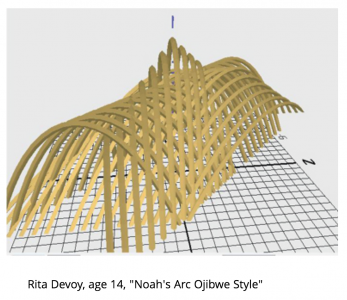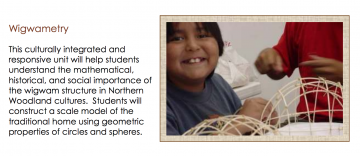In the evolving fields of Science, Technology, Engineering, and Mathematics (STEM), there is an increasing awareness of the importance of cultural relevance and diversity. This recognition has paved the way to create “Culturally Situated Design Tools (CSDT): Teaching Math and Computing Through Culture,” a project that integrates cultural heritage with technological innovation, thus adding a crucial ‘C’ for culture into the STEM acronym. This week in the mentoring circle, we explore how CSDT uses cultural designs to discover mathematical concepts interwoven within Indigenous ways of knowing. An exceptional digital resource capable of restoring “heritage algorithms” into our classrooms by creating cultural designs that honour and revitalize the intellectual legacy of Indigenous communities.
Culturally Situated Design Tools (CSDT) is a digital resource developed by Ron Eglash, an Ethno-mathematician who studies how math and cultures intersect. His research has shown that many aspects of African design in architecture, art, and even hair braiding are based on mathematical patterns from Indigenous perspectives. He developed educational software and tools to leverage the rich mathematical and scientific concepts inherent in various cultural practices. CSDT is not merely about integrating cultural aspects into STEM education superficially. Instead, it asks educators to delve deep into the heritage algorithms, patterns, and principles derived from historically and systemically marginalized cultures. Watch Ron Eglash’s TED Talk, “The Fractals at the Heart of African Designs” to learn more.
Math is Cultural! Indigenous peoples across the globe have made significant contributions to numerous mathematical applications familiar to us today. Unfortunately, the extraction of knowledge from Indigenous cultures often remains hidden within our contemporary understanding of mathematics. The restoration of “heritage algorithms”—the mathematical methods through which Indigenous people articulate their worldview— offers a unique opportunity for students to learn mathematics and scientific principles by digitally simulating original Indigenous artifacts and enabling them to create their own designs. Among the available Culturally Situated Design Tools are Anishinaabe Arcs & Quilts, Pre-Columbian Pyramids, Cornrow Braids, and many others. These tools aim to enhance education, justice, and equality by introducing a fresh perspective on STEM+C educational methods.
Culturally Situated Design Tools originate from a selection of heritage arts deeply rooted in Indigenous communities and reflective of local mathematical and scientific insights. This selection process involves engaging with Elders and community members to ensure the tools are relevant and respectful towards Indigenous pieces of knowledge. Additionally, the development of these tools is done in collaboration with Indigenous artisans to ensure an accurate representation of the designs, prioritizing their perspectives without external imposition. Each tool begins with a background story, providing students with a comprehensive context for their learning. An example is “Wigwametry,” developed by RunningHorse Livingston and Joni Theobald, a beautiful mathematical lesson applicable across K-12 geometry units, embodying the essence of integrating cultural heritage into educational frameworks.
Culturally Situated Design Tools utilizes various cultural artifacts, such as African braids, Indigenous beadwork, and Maori carving patterns, as entry points for exploring complex mathematical concepts and computational thinking. For instance, a tool might use the algorithmic nature of traditional beadwork patterns to teach coding and algorithmic thinking or employ African fractals to explain geometric concepts and scaling. The primary aim of CSDT is to make STEM fields more accessible and engaging to students from diverse cultural backgrounds, particularly those from systemically marginalized communities. By recognizing and valuing the scientific and mathematical knowledge embedded in their cultural practices, CSDT empowers students, enhancing their interest and participation in STEM fields.
The lack of diversity in STEM is a major concern in our modern era and its biased perspective will continue to create industrial pollution, labour exploitation and the weaponization of everything from drones to social media. The addition of Indigenous knowledges in STEM +C (culture) opens the possibility create to a more just and sustainable world. Culturally Situated Design Tools use a generative justice framework as a foundation for the much-needed diversity in mathematics and science. Hence, students from all backgrounds are more attracted to mathematics through culturally sustaining approaches that teach that math is more than numbers. Through interactive software, hands-on activities, and community-based projects, CSDT offers a holistic educational experience that respects and incorporates the wisdom of Indigenous and cultural knowledge systems.
The journey of integrating Culturally Situated Design Tools is part of a broader movement toward culturally sustaining education, which seeks to affirm students’ identities, build upon their prior knowledge and experiences, and challenge inequalities within the education system. The integration of CSDT into STEM education is about shaping a future where Indigenous knowledge systems and cultural diversity are recognized as integral to technological advancement and innovation. By restoring the use of heritage algorithms and cultural practices in schooling contexts, CSDT contributes to envisioning Indigenous futurities where technology and culture go hand in hand, fostering a world where diversity and cultural sustainment are the cornerstones of innovation.

